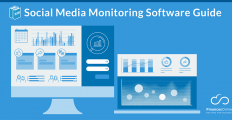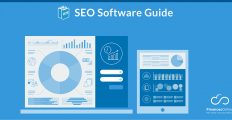The COVID-19 pandemic has added much fuel to the world’s increasing reliance on smartphones, driving the growth of mobile applications at a frenetic rate.
Mobile app development in 2021 is going to be much bigger and faster. This will be thanks to new technologies like 5G and edge computing, but it will also be because of changing attitudes toward apps in general. Indeed, we are diving deep into a time when our society becomes more anchored on mobile devices and, by extension, mobile applications.
In this article, we look at what apps we can expect in 2021 and beyond. How are apps going to use 5G? Will apps be more ubiquitous not only in phones but in wearables as well? Are there top mobile marketing software to look out for? We will be answering these and more to help you understand where the industry is headed in the next few years.

Mobile App Trends Table of Contents
As has been observed during the pandemic, your mobile app consumption is likely to grow more rapidly in the next few years. In 2021 alone, around 196 billion mobile apps would be downloaded on the Google Play Store, with 42 billion more on the Apple App Store.
Not only that, but all the mobile apps in contention are also estimated to generate $693 billion in revenue globally in the same period. All that work and time at home has left people turning to the internet to get through the day, most of which is via mobile. About that, it’s confirmed that 89.2% of mobile internet time is spent on mobile apps.

All of these is due to the swift and widespread adoption of smartphones. Statista, for example, estimates a 1,572.22 and 1,589.2 million unit shipment of mobile phones in 2020 and 2021, respectively. For 2020, the leading vendors were Samsung (22.7%), Huawei (14.6%), Xiaomi (13.1%), and Apple (10.5%).
Knowing which way the wind is blowing means distinguishing the drivers of mobile app future trends—technology and social needs like the one arising out of the pandemic. As such, we’ve compiled 16 predictions that will make waves in 2022, or at least create the foundations for a mobile world into the next decade. This should help you position your business the best way you could.
1. 5G
5G, the 5th generation of the mobile connectivity standard, is coming soon. It will change mobile apps and app development in a way we’ve never thought possible. 5G is also said to herald the Fourth Industrial Revolution, but what does the adoption of 5G mean for mobile apps?
It all boils down to 5G’s speed and interconnectivity. Unlike its predecessor, 5G’s latency is less than one millisecond. Compare this to human reaction time, which is up to 300 milliseconds, and 5G virtually feels almost instantaneous. Besides, 5G’s combination of extremely low latency, high bandwidth, and connection density will open up app development in fields like the Internet of Things (IoT), augmented reality (AR) and virtual reality (VR), connected driverless vehicles, wireless health, and more. Next-generation apps will leverage this power and speed to do things we’ve never thought possible.
On the more immediate side, increased speed and reduced latency will also be able to lower battery consumption. Lowell McAdam, the head of Verizon, claimed that 5G’s speed will move computational power to the “edge,” removing the processes that drain smartphone batteries. Furthermore, 5G’s higher radio frequency and shorter wavelengths will also make more precise geotargeting and geofencing for mobile apps.
5G Essential Statistics:
- 5G is coming and will herald the Fourth Industrial Revolution.
- This new standard promises extremely low latency, high connection density, and high bandwidth.
- Among other things, 5G will also feature more precise geolocation and reduced battery consumption. (Mobile World Live)
- The number of 5G subscriptions is predicted to reach 1,900 million by 2024. (Statista; Liftoff, 2020)
- Northeast Asia remains as the region with the largest number of 5G subscribers. (Statista; Liftoff, 2020)
- By 2025, 20% of the world’s population will be using 5G network. (Statista; Liftoff, 2020)
- The share of global shipments of 5G-enabled smartphones has been predicted to grow from 0.9% in 2019 to 27.3% in 2021. (Statista; Liftoff, 2020)
- Consumer electronics has the biggest global 5G infrastructure market share in 2020 at 22.6%. (Statista; Liftoff, 2020)
- The 5G chipset market has been forecast to reach the $3.55 billion market value in 2021 and as high as $22.86 billion in 2027. (Statista; Liftoff, 2020)
- 20% of mobile telecom technology’s global market share will be held by 5G in 2025. (Statista; Liftoff, 2020)
2. Edge Computing
The cloud and big data confer benefits to businesses. The former has been hailed as one of the greatest perks of the internet, but it’s quickly showing its age. The trouble with the cloud is that it’s highly centralized, which makes latency a big deal for technologies that 5G promises. However, one of the best ways to fulfill those promises is to use edge computing.
Edge computing is an evolution of the cloud. It will literally move the cloud near the user by making some of your computational needs processed either locally or on the nearest station—the “edge” of the cloud. And what happens to the cloud? It goes nowhere—it just goes into your device. When edge computing is widely adopted, your device itself becomes part of the cloud, which removes some of the latency issues. This means that 5G’s brave new world of wireless, autonomous cars, and the IoT will all be taking cues from edge-powered devices.
B2B mobile app trends also point to the rising importance of edge in the future. In fact, in 2020, location-based services grew to dominate the mobile edge computing market due to the demand for the improvement of data transmission and adoption of 5G technologies in the midst of the COVID-19 outbreak.

Edge Computing Essential Statistics:
- The mobile edge computing market value is expected to reach $2.8 billion in 2027. (Meticulous Research, 2021)
- Due to the impact of the COVID-19 outbreak, mobile edge computing’s compound annual growth rate from 2020 sits at 30.1%. (Meticulous Research, 2021)
- In the next few years, 90% of enterprise data sent to the cloud will be reduced to 25% due to the edge.
- The market size of global edge computing is predicted to reach $15.7 billion. (Statista, 2020)
- Meanwhile, edge computing’s market value is forecast to reach $250.6 billion in 2024. (Statista, 2020)
- The Asia Pacific region will account for 36.7% of the edge computing power footprint in 2028, followed by Europe (31%) and North America (20.2%). (Statista, 2020)
- In terms of segments, the 2028 forecast is that mobile consumers will account for the largest edge computing footprint globally that will amount to 16,938 megawatts. (Statista, 2020)
- The manufacturing industry showed the most interest in adopting edge computing in 2019 (31%); manufacturing also took the lead among the industries that planned to implement edge computing technology in the same year. (Statista, 2020)
- According to research conducted by IDC, approximately 25% of organizations in 2024 will integrate edge data with cloud-based applications to improve business agility. (IDC, 2020)
- 80% of investments in edge technology will be driven by the impact of COVID-19 on the business industry. (IDC, 2020)
3. Progressive Web Apps and “Instant” Apps
PWAs are a hybrid between web pages and apps. One of the best advantages of these apps is that they take less time to develop than normal apps because they are simply websites with app functionalities. On the other hand, they have expanded utility than simply being web pages as you can save them on your home screen. For example, an app loses 20% of potential users at every step between a user’s first encounter with an app and using the app. A PWA avoids this problem because once the user first sees it, they can start using it immediately.
Deemed as the next big thing in application development, PWAs deliver benefits that counter the disadvantages of native applications. Among these benefits are: PWAs have a lower degree of dependency on the Internet, require less loading time, and do not occupy much space. PWAs are also highly accessible and adaptable and updated automatically.
The significance of PWAs is highlighted during the coronavirus crisis, especially in the ecommerce industry due to the dramatic increase in online shopping activity. A number of B2B and B2C companies have reported an increase in engagement, conversion rate, and sales and revenue after building and launching their PWA platforms. Among them is AliExpress, which recorded a 104% increase in conversion rate across all browsers. Meanwhile, 50% of Flipkart’s new customers were acquired through PWA; furthermore, 60% of their PWA visitors uninstalled the native application to save space.

Progressive Web Apps Essential Statistics:
- Online retailers in the US and Canada experienced 55% to 70% increase in orders between March 29 and April 12 of 2020. (Emarsys, 2021)
- 24% of ecommerce companies planned to invest in PWAs in 2020 and 11% were already using PWA in the same year. (Statista; Search Node, 2020)
- PWAs’ conversion rate is 36% higher than the conversion rate of native mobile apps. (Medium, 2019)
- PWAs and “instant apps” are web page-app hybrids that promise instantaneous usage the moment you see it, without installing anything.
- Downloadable apps will soon become relics as development moves to on-demand app services instead, similar to desktop SaaS.
4. Wearables
The wearable market is maturing. According to Statista, there will be 1.1 billion connected wearables in 2022. Mobile app development trends point to the fact that the development of these devices is a heady gold rush. Not only would websites and apps work on mobile devices as well as desktops, but they should work seamlessly on wearables. This would make configuring them a challenging task, but it would soon become apparent that smartphones would be as passé as desktops are now to mobiles.
The trend, however, has suddenly shifted in 2020. In the midst of a global pandemic, wearable devices are seen as potential early detectors of asymptomatic and pre-symptomatic COVID-19 cases. Activity trackers, such as FitBit, and smartwatches are equipped with features that continuously monitor physiological data in real-time, which can help in the early detection of any deviations from an individual’s normal health baseline. Among the notable studies and applications of this subject was conducted by Northwestern University in Evanston, Illinois. In May 2020, Northwestern University unveiled the first wearable COVID-19 monitoring device. The revolutionary project earned them a $2.4 million award from the US Department of Defense, which will fund its further development and deployment.
Source: Statista
Wearables Essential Statistics:
- There will be more than 1 billion connected wearable devices by 2022. (Statista, 2020)
- North America has the biggest number of connected wearable devices, amounting to 700 million by 2022. (Statista, 2020)
- The forecast number of wearable unit shipments worldwide in 2024 is 631.7 million. (Statista, 2020)
- Wristwear was the most popular wearable until 2018 based on the number of device shipments. But starting in 2019, hearables took the lead, shipping 234.3 million units in 2020. (Statista, 2020)
5. Beacon Technology
Since it was first introduced in 2013, beacon technology has grown significantly from being Apple’s low-energy Bluetooth device to a globally recognized technology with more than 400 million deployments in 2020. According to GeoMarketing, there currently are 3.9 million proximity sensors deployed globally that use beacon. Despite this, however, 70% of consumers are unaware of this technology and that brands, retailers, and ad agencies are using it to send push notifications to customers.
But it’s not all just about retail. Beacons offer a personalized experience. People are 19 times more likely to engage with a product when it’s advertised using a beacon. Native apps that capitalize on beacon technology and integrate it seamlessly with the beacon signal will thus, expedite a conversion or enhance the interaction between the customer and the brand. Beacons can even be used for AR and mobile payments.
Another potential use case of beacon technology is for tracking and curbing the spread of COVID-19. Google and Apple both announced a contact tracing framework using Bluetooth in the form of Exposure Notification API. This technology allows mobile devices to ping and receive random beacons that will be downloaded to a server and compared with a list of people confirmed to be COVID-19 positive.
![]()
Beacon Technology Essential Statistics:
- Beacon technology market value worldwide is predicted to reach $55,554 million by 2026. (Statista, 2020)
- Approximately 3.9 million of proximity sensors deployed globally are beacons. (BeaconStac, 2020)
- Beacon technology can offer location-specific information to users’ phones.
6. mCommerce
Beacons also play a significant role in the next part of the discussion: mobile payments. Beacons will become key aspects of mcommerce as they can facilitate payments in tandem with mobile wallets, which look to supplant the physical plastic of credit and debit cards. But mobile commerce—itself a part of global ecommerce trends—is more than just a method of payment—it spans other disciplines and applications.
Mobile apps that utilize some form of mcommerce method have been predicted to be more prevalent in 2020 more than they were in the past. To illustrate, 61% of smartphone users compare prices while in store using their phones. Another 63% use mobile app coupons for in-store purchases. This is not merely an ecommerce trend. Paying through a virtual mobile wallet can take the monotony away from standing in line or waiting for bank approval. Apps that leverage this, either as a wallet or an ecommerce platform, will see more use and adoption in 2020 and beyond.
Yes, Lifecycle Marketing found out the mobile average order value (that is, the percentage of people who check out orders on their phones) has achieved parity with that of desktop for the first time in 2018. This means that brands will have more incentive to create apps that can speed up and simplify the ordering process on their phones. And, with mobile commerce this strong as we head into a new decade, more on-demand platforms will rise as people will always choose ease and convenience. Or, on the other side of the equation, to earn extra dough.

mCommerce Essential Statistics:
- Despite the global pandemic, the mcommerce market value is predicted to reach $3,901 billion by 2026. (Globe Newswire, 2020)
- 79% of smartphone users have made online purchases in the last six months using their mobile devices. (OuterBox, 2021)
- Mobile retail commerce sales accounted for 70.4% of global retail ecommerce sales in 2020. (Statista, 2018)
- More than 50% of Internet shopping is done using mobile devices. (OuterBox, 2021)
- 85% of consumers prefer using mobile apps when shopping online to web apps. (CleverTap, 2019)
7. More On-Demand Apps
On-demand apps are kind of like a “third party” where users can hire a service or a product. One of the foremost examples is Uber, where the service in question is a ride. On-demand apps fulfill other demands—hence, the name—in a variety of fields like food, logistics, groceries, accommodations, and more when and where the users need them.
There are countless on-demand apps in 2020, but 2021 and beyond looks to be the same—just probably more of them. Newer technologies will obviously make new demands apparent, and people will think of more ways to make their lives easier, which on-demand apps can fill. Luxuries will also become necessities as on-demand apps penetrate every facet of life, from the home to your career, to travel, and much more.
Annual On-Demand Economy Spending
(in billion US dollars)
Online marketplace: 35.5
Online marketplace
Transportation: 5.6
Transportation
Grocery delivery: 4.6
Grocery delivery
Source: Mobile App Daily 2021
Designed byEdge computing and 5G can also make hitherto impossible on-demand services happen. For example, drop-offs (or rescue efforts) in remote wildernesses can soon be possible, thanks to on-demand delivery and a space-based 5G network, including SpaceX’s touted Starlink constellation.
On-Demand Apps Essential Statistics:
- 22.4 million consumers worldwide spend around $57.5 billion on on-demand technology. (Harvard Business Review; Business 2 Community, 2020)
- On-demand apps can provide services on demand, such as Uber, Airbnb, and food apps, etc.
- There will be more on-demand apps and services in 2021 because of newer technologies.
- The coming of 5G and edge computing will likely create the need for more on-demand services.
8. AI
Machine learning (ML) can significantly reduce the time spent on developing apps. But while AI and ML can optimize app development, they can also reduce errors human programmers would have overlooked. Existing apps now incorporate AI elements, including chatbots, but some personalize certain elements of a customer order. For example, the fast-food chain McDonald’s is leveraging big data and AI to personalize its drive-thru menus based on factors like the customer, time of day, or the weather.
In the healthcare industry, AI has been used more in reducing the time spent on administrative tasks. But in 2020, the use of AI has expanded to telemedicine during AI-triage and consultations. Furthermore, AI-powered thermal scanners have also been deployed to reduce physical contact and transmission.
It’s clear that AI and machine learning will continue to remain as key drivers of technology developments in 2021 and beyond. And while AI-assisted medical equipment is a start for the healthcare industry, we can also start expecting AI-powered apps on wearables and phones that control an IoT ecosystem.
Most Important Benefits from AI-Powered Solutions
Predictions linked to customers, business health and machines: 38
Predictions linked to customers, business health and machines
%Automation of manual/repetitive tasks: 27
Automation of manual/repetitive tasks
%Monitoring and alerts to provide assessments on the state of your business: 14
Monitoring and alerts to provide assessments on the state of your business
%Increase quality of customer communications: 10
Increase quality of customer communications
%Recommendations related to internal issues/customer facing efforts: 7
Recommendations related to internal issues/customer facing efforts
%Others: 4
Others
%Source: nrbii.com
Designed byAI Factual Essential Statistics:
- China, South Korea, Taiwan, and Hongkong use AI and big data in contact tracing and strict implementation of quarantine. (Oxford Academic, 2020)
- 55,000 residents in Taiwan underwent mobile geofencing, an AI-assisted technology that helps the government keep track of the residents using their phones’ signals. (Oxford Academic, 2020)
- 66,000 travelers that arrived in Hong Kong in 2020 had to wear AI-powered electronic wristbands, which notified authorities when the travelers break quarantine regulations by leaving their homes. (Oxford Academic, 2020)
- AI automation spending has grown from $2.3 billion in 2019 to $3.1 in 2020. (Statista, 2020)
- The global revenue projection for AI software for 2021 is $34.9 billion. (Statista, 2020)
Top Mobile Marketing Software
- Avochato. An innovative, cloud-based text messaging platform built with sales, marketing, and support teams in mind. Avochato provides robust features that enable marketing teams to run campaigns through one-to-many messaging.
- Iterable. A reliable, online marketing platform designed to help businesses streamline sales and promotion operations. Iterable provides a user-friendly interface that enables businesses to engage users via personalized messaging.
- Customer.io. A powerful marketing solution for B2C businesses. Customer.io automates the customer interaction process by connecting emails to mobile phones, making it a breeze to send messages across platforms.
- Adestra. An innovative solution that enables users to run email marketing campaigns smoothly. Adestra provides a unified platform allowing users to interact with customers via custom texts and email
- InsideView. An all-in-one, cloud-based marketing intelligence platform. InsideView spurs truly personalized interactions through artificial intelligence and data science to derive optimal customer value.
9. Bots
Chatbots are nascent at the moment, but in 2020 and beyond, their adoption and implementation will become more commonplace. For example, estimates place the market value of the chatbot industry at $1.25 billion by 2025. According to Business Insider, global consumer retail spending via chatbots (which include stand-alone chatbot apps and chatbot integration in messaging applications) will reach $142 billion by 2024.
Among consumers, a study reveals that nearly 40% of global internet users actually prefer interacting with chatbots than with virtual agents.
Advances in ML, AI, and natural language processing (NLP) will also make chatbots more effective. Communication with them will become more organic, using techniques like facial and voice recognition, sentiment analysis, and semantic search.
These bots will also be part of the rapidly growing IoT ecosystem. In fact, chatbots like Apple’s Siri and Microsoft’s Cortana are considered mobile applications in themselves whose UI will be the user’s voice itself. In such a case, chatbots will become a central “smart hub” of applications and IoT-enabled devices.
Amid the COVID-19 pandemic, chatbots are seen as helpful assistants in supporting triage and patient assessment. Sutter Health, a Sacramento-based healthcare system, has launched a comprehensive AI-powered symptom checker that patients can access online. While this online symptom checker does not have the ability to diagnose, it works well enough in gathering information from the patients using chatbots.

Bots Essential Statistics:
- The chatbot industry will be worth $1.25 billion by 2025. (Grand View Research)
- AI techniques like NLP, facial and voice recognition, sentiment analysis, and semantic search will make chatbots more “human-like”.
- Chatbots will become the go-between between humans and the IoT, with its “UI” being voice itself. (Peerbits)
- 24% of ecommerce companies planned to implement AI chatbots in 2020. (Statista, 2020)
- 36% of chatbot users in the world are in the United States. (Fluido.AI, 2020)
10. Personal “Smart Hubs”
Speaking of a smart hub, phones are going to be the central hub of IoT-enabled devices using apps as a sort of an API. Apps in smartphones will interface with wearable and other devices, making phones a control center or a central dashboard. The likely universal app that can do this is a voice assistant or a chatbot.
This technology can aid in the precautions taken to reduce the spread of coronavirus, especially for people who have to stay inside their homes. For households equipped with smart devices, a smart hub is ideal for controlling these devices without having to physically touch them by enabling voice assistant function instead.

Audi’s next-generation off-roading vehicle uses a smartphone as its central dashboard. (Source: Wheelsage.com)
Personal Smart Hub Essential Statistics:
- Consumers are expected to spend $62 billion on smart home devices in 2021. (Strategy Analytics, 2020)
- Phones will assume a new role as a central control panel of IoT devices and wearables called the personal smart hub.
- These will require special apps to interface with other connected devices, but the easiest is to enable a chatbot or voice assistant as a “go-between” between humans and the IoT.
- One present-day example of such a concept is a smart vehicle like the Audi AI: Trail Quattro.
11. Augmented and Virtual Reality
Social distancing technologies have been in the works since 2020 when COVID-19 began affecting various industries, including manufacturing. For example, 60% of them leverage AR and VR as virtual supplemental labor on virtual production lines. As a result, a significant percentage of manufactures claimed that they have reduced operational costs and increased productivity.
Despite the positive impact of using AR and VR technology, there are still manufacturers that are hesitant to take advantage of this technology. According to a survey, 71% of manufacturers are skeptical about AR and VR’s scalability and this is why they have not utilized any AR and VR technology yet. Furthermore, 76% of manufacturers that have already adopted AR and VR stated that scalability is where they need the most help.

AR/VR Essential Statistics:
- 56% of manufacturers have utilized some form of AR/VR technology in the last 12 months. (DesignNews, 2020)
- 29% of manufacturers reported an increase in productivity efficiency since they implemented AR/VR technology into their organization. (DesignNews, 2020)
- The combined market share of AR and VR will be $160 billion by 2023. (Statista, 2021)
- The AR and VR market size reached $12 billion in 2020. (Statista, 2021)
- 61% of AR/VR experts and company executives agree that the best way to monetize AR/VR technology is through selling products or subscriptions. (Statista, 2021)
12. Accelerated Mobile Pages
AMPs are an open-source project by Google and Twitter, which aims to make pages load faster. As you can surmise from the name, accelerated mobile pages improve web page load time by minimizing unnecessary code. This means pages load much faster and use fewer data.
For example, Google reports that AMPs load less than a second on average and use 10 times less data than a non-AMP page. This is just indicative of Google’s mobile-first thrust, which means they place mobile-responsive higher on search results.
What does that mean for app development, though? AMPs will never replace apps totally, but it will make low-quality apps obsolete. With the recent shift in progressive web apps and streaming apps, some apps will rather use AMP protocols instead of clogging up the App Store or the Google Play Store. As a result, you will get more relevant, mobile-friendly applications in addition to lightning-fast PWAs.
Source: SimilarTech
AMPs Factual Essential Statistics:
- As of 2020, AMP supports 240 advertising networks. (AMP, 2021)
- More than 25 million domains have already implemented AMP as of 2020. (Sitecore, 2020)
- Arts and entertainment is the most popular industry vertical that use AMP. (SimilarTech, 2021)
- The United States tops the list of countries which websites use AMP. (SimilarTech, 2021)
- Yahoo is the number one website that uses AMP with 2 billion monthly visits. (SimilarTech, 2021)
13. Blockchain
There is no doubt that blockchain is one of the best ways to secure data, whether it be a record of transactions (as in cryptocurrencies) or documents. However, in the time of the global pandemic, one of the top things that blockchain can do is to keep track of COVID-19 vaccines.
According to Reuters, there are currently two hospitals in London that are utilizing blockchain technology when it comes to monitoring the storage of COVID-19 vaccines. This move not only secures the record-keeping and enhances data-sharing across supply chains, but it also addresses other logistical difficulties that hold back the speedy distribution of the vaccine.
Among all industries, banking has the largest blockchain spending in 2020, which accounted for 29.9% of the global blockchain market value.

Blockchain Factual Essential Statistics:
- Blockchain technology can play an important role in contact tracing and in identifying high-risk patients. (Sharma, et al., 2020)
- Among all industries, banking has the largest blockchain spending in 2020, which accounted for 29.9% of the global blockchain market value. (Statista, 2020)
- The global spending on blockchain solutions as of 2020 has reached $4.1 billion. (Statista, 2020)
14. Predictive Analytics
Retailers often use predictive analytics to personalize the products for each customer. A study described how Walmart used data mining to find out that sales of strawberry Pop-Tarts increased sevenfold, just like beer, right before hurricanes hit. Armed with such data, Walmart stocked their shelves with these items when a forecast of hurricanes is on the news.
It makes predictions of future events using available data, employing techniques like machine learning, data mining, and statistics. Using these analytics, developers can take actions, such as adding or removing features, which can make apps a hit for their users. In 2020 and beyond, elements of apps (or entire applications themselves) will become more personalized, such as UI or UX, to make the customer experience in that certain app tailored to who’s buying.
Beyond retail, predictive analytics is also being utilized in addressing the coronavirus problem. Medical researchers and institutions are exploring the potential of predictive analytics in determining which patients are most at risk of contracting the virus, which will become the most severe cases and even those who are likely to not recover from it.
Predictive Analytics Essential Statistics:
- Predictive analytics has been used to develop a model that can forecast flu outbreaks 15 weeks in advance. (Health IT Analytics, 2020)
- 10 COVID-19-related keywords have led to identifying predictors of the virus hot spots in the United States. (Health IT Analytics, 2020)
- There are currently 4.3 million apps across Android and iOS, but only 0.01% of them will be successful. (Statista, 2020)
- Predictive analytics can be used to design and develop apps that will be a hit for customers, including certain elements of the app.
15. Cross-Platform Apps
There are 24,000 different Android phone models, all with their own version of Android and hardware specs—and that’s four years ago. To these, add the iPhones that have a different mobile application ecosystem altogether. What’s a developer to do when it needs to write for BOTH devices? Write for each, separately, because writing for one doesn’t mean it’s going to run in the other. A cross-platform framework, however, can eliminate this problem.
A cross-platform framework can allow an app to run on the two major mobile operating systems. Developers who use cross-platform frameworks write the code only once, saving time and money writing natively for either OS. Among other things, using such a framework offers several benefits like consistency of UI, code reusability, reduced marketing costs (and time), and fewer technical hurdles.
The year 2020 showed more of these frameworks gain more widespread use as we enter an era where code simplicity and consistency are critical. Among these frameworks, React Native became the most popular among developers in 2020. Other popular frameworks inclue PhoneGap, Xamarin, and Unity. PhoneGap, owned by Adobe (formerly Apache Cordova) uses HTML5, CSS, and JavaScript, which most developers already know and both OSes support. Other platforms include Xamarin, a Microsoft-owned framework that uses C# and .Net as its language, and Unity, a 2D/3D engine that can create games for different platforms, including Windows OS.
Most Popular Cross-Platform Mobile Frameworks
As Used by Software Developers Worldwide in 2020
React Native: 42
React Native
%Flutter: 39
Flutter
%Cordova: 18
Cordova
%Ionic: 18
Ionic
%Xamarin: 14
Xamarin
%Unity: 11
Unity
%PhoneGap: 6
PhoneGap
%NativeScript: 5
NativeScript
%Apache Flex: 2
Apache Flex
%Dojo: 1
Dojo
%Source: Statista 2020
Designed byCross-Platform Essential Statistics:
- React Native is the most popular mobile framework used by software developers in both 2019 and 2020. (Statista, 2020)
- Writing code for each of the 24,000 different Android phone models and iPhones needs to be consistent.
- Cross-platform frameworks can allow a developer to code only once, but let the app run in both OSes.
- Several cross-platform frameworks exist, the most popular of which use HTML5, CSS, JavaScript, and C#—things that developers know already and are supported by both operating systems.
16. Low-Code App Development
Like cross-platform app development frameworks, organizations can use low-code app development frameworks to hasten app development times. This is attractive on many levels, because businesses may not always have the resources or the time to develop an app. A low-code (or sometimes no-code) platform can allow an organization to design and develop an app without coding experience.
Such platforms can decrease the complexity of app development. Low/no-code app development is usually straightforward, which uses drag-and-drop actions and intuitive UI to create an app. These platforms will likely not be the end of traditional coding for apps, but they will become a common way for businesses to make their first apps without needing to hire an app developer or outsourcing it.
In 2021, low-code is predicted to become mainstream according to TechRepublic. This claim is further supported by Forrester’s 2021 software development predictions where it is stated that more and more development shops will be adopting low-code platforms due to the changes in the working environment caused by the global pandemic.

Low-Code App Development Essential Statistics:
- 75% of development shops will transition to using low-code platforms in 2021. (TechRepublic, 2020)
- By 2024, 65% of app development will be done using low-code platforms. (Alpha Software, 2021)
- The use of low-code platforms is expected to create more cross-functional teams in 2021. (Alpha Software, 2021)
- Low-code and no-code platforms do not require user experience and expertise.
- Organizations can use low/no-code development frameworks to speed up the app development process.
- It’s also cost-effective, as businesses can create an app without having to outsource it or hire an app developer.
The Next Great Leap in Mobile App Development
“Do you guys not have phones?” is a question that, while meant to be humorous, should be the mantra of every mobile app developer moving forward. Desktops will become more and more irrelevant to consumers, especially in retail, and a mobile-centric ecosystem will dominate the landscape. New technologies like 5G, edge, and wearables will lead the charge. Developers should mind these newfangled tools in their iterative process.
As new tools become available or more mature, our app trends report expects that app development is going to be faster and more streamlined than ever.
This is true whether you are looking at app trends iOS or Android app trends.
An increasing reliance on AI and ML, as evidenced by our machine learning statistics, will make development exponentially faster than the preceding generation. New vistas of development techniques and disciplines will also open up in the wake of personal smart hubs and mobile commerce.
To that end, this article—while certainly not a roadmap—may serve as one of the first of many writings on the wall. A world on the go needs apps that can keep up. And keeping up with development means a streamlined, agile team. Our guide on project management tools may just be the thing you need to shorten and optimize your mobile app development time.
References:
- 5g dossier. (2020). Statista.
- Ablondi, W. (2020, June 29). 2020 global smart home devices forecast – July 2020. Strategy Analytics.
- Alsop, T. (2018, April 12). Global beacons technology market size 2026. Statista.
- Alsop, T. (2021, March 22). Topic: Virtual reality (VR). Statista.
- AMP market share and web usage statistics. (2021). SimilarTech.
- Bonnie, E. (2019, April 1). The mobile growth statistics you need to know. CleverTap.
- Chatbot market worth $1.25 billion by 2025 | CAGR: 24.3%. (2017, August). Grand View Research, Inc.
- Combs, V. (2020, October 30). Why 2021 will be the year of low-code. TechRepublic.
- Dave, K. (2019, June 13). Messenger bots to challenge the utility of mobile apps. Peerbits.
- Facts & Factors. (2020, December 23). Global M-commerce market size will reach USD 3,901 million by 2026: Facts & factors. GlobeNewswire.
- The future of SEO: Three trends to prepare for now. (2020, November 30). Sitecore.
- Global augmented/virtual reality market size 2016-2020. (2021, February). Statista.
- Global mobile retail commerce share 2016-2021. (2018, February 13). Statista.
- Goovaerts, D. (2018, March 21). Verizon CEO predicts 5G phone battery utopia. Mobile World Live.
- Groden-Morrison, A. (2020, December 10). Low code 2021 predictions. Alpha Software.
- Hegde, A. (2020, December 28). 5 powerful beacon use-cases for 2021: Takeaways from 2020. beaconstac.
- In-depth: Artificial intelligence 2020. (2020, November). Statista.
- Karwatka, T. (2019, February 12). CRO by PWA — Optimizing mobile ecommerce. Medium.
- Kent, J. (2020, November 4). Predictive analytics model forecasts future flu outbreaks. HealthITAnalytics.
- Kent, J. (2020, October 22). Web-based predictive analytics identifies COVID-19 hot spots. HealthITAnalytics.
- Lin, L., & Hou, Z. (2020, May 21). Combat COVID-19 with artificial intelligence and big data. OUP Academic.
- Liu, S. (2020, March 27). Topic: Edge computing. Statista.
- Liu, S. (2020, December 15). Global edge computing footprint by segment 2028. Statista.
- Liu, S. (2020, September 14). Blockchain market share by industry 2020. Statista.
- Liu, S. (2020, June). Cross-platform mobile frameworks used by global developers 2020. Statista.
- Mobile edge computing market – Global opportunity analysis and industry forecast (2020-2027). (2021). Meticulous Market Research Pvt. Ltd.
- New insights. (2021, February 25). Commerce Insights.
- Patel, M. (2020, February 19). How on-demand apps can help industries to thrive in 2020. Business 2 Community – Harvard Business Review.
- Sabanoglu, T. (2020, December 1). Global e-Commerce companies to invest in PWA 2020. Statista.
- Sabanoglu, T. (2020, September 7). E-Commerce companies implementing AI chatbots 2020. Statista.
- Sharma, A., Bagha, A. K., Javaid, M., Shukla, D. K., & Haleem, A. (2020, October 22). Blockchain technology and its applications to combat COVID-19 pandemic. Research on Biomedical Engineering.
- Smith, J. (2021, January 10). Mobile ecommerce statistics in 2021 and future online shopping trends of mcommerce. OuterBox.
- Spiegel, R. (2020, June 5). Manufacturers are turning to AV/VR to reduce production costs. designnews.com.
- Statista Research Department. (2021, February 15). Biggest app stores in the world 2020. Statista.
- Supported platforms. (2021). AMP.
- Thomas, M. (2020, December 20). 2021 chatbot trends: What is the new year storing for AI bots? Medium – fluido.ai.
- Villars, R., Muscolino, H., Kurtzman, W., Findling, S., Jyoti, R., Vesset, D., Morales, M., Cooke, J., Mohan, D., Lang, J., Gillen, A., Rizza, M. N., Nadkarni, A., & MacGillivray, C. (2020, October). IDC FutureScape: Worldwide IT industry 2021 predictions. IDC.
- Wearables dossier. (2020). Statista.























The mobile app industry is constantly evolving, and it's important for developers to stay on top of the latest trends. Some key forecasts by MultiQoS Technologies for 2022/2023 and beyond include the rise of augmented reality, the increasing importance of app personalization, the adoption of 5G technology, and the emergence of voice-enabled apps. Other trends to watch for include the growing popularity of mobile commerce, the increasing use of chatbots and AI, and the continued emphasis on app security. By staying up-to-date with these trends, developers can create mobile apps that are both innovative and user-friendly.
Thank you for explaining the logic providing useful insights on how mobile applications are changing industries and businesses behind it and the guidance on how to practically get it done. At present mobile application has become a compulsory element to the business to attract customers. This article helps to understand the factors we have to consider while developing a mobile app. The factors you have mentioned in your blog are important.
Leave a comment!